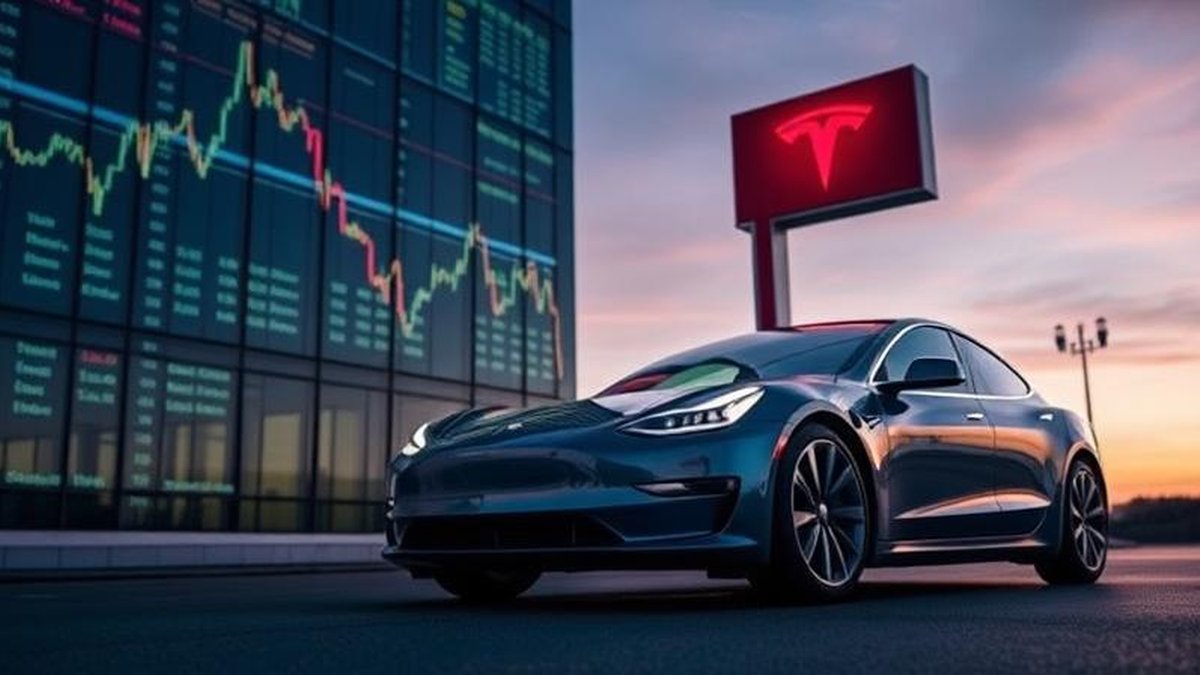Tesla Shares Climb as China Deliveries Rebound: What Drove the Upswing and Whether It’s Sustainable
Tesla stock advanced after fresh industry data pointed to a sharp rebound in August deliveries in China, with more than 95,000 units reportedly handed over to customers. The beat helped ease investor concerns around demand softness and intense local competition, and it reignited debate about margins, pricing power, and the company’s product roadmap into year-end. Below we break down what changed in August, how it impacts profitability, where risks remain, and the key signposts to watch.
What Changed in August
Price, Product, and Positioning
1) Calibrated pricing and promos: Tesla’s recent price adjustments and limited-time promotions targeted high-elasticity buyers without fully resetting the broader pricing curve. That helped stimulate incremental volume while preserving option value for future mix management.
2) Localized features and UX: Expanded in-car services, improved navigation/data integrations, and region-specific software tweaks improved perceived value for Chinese consumers. Localization matters in a market where feature parity and ecosystem integration influence brand choice.
3) Delivery cadence and logistics: Smoother logistics and end-of-month push dynamics likely contributed to August’s step-up, normalizing from earlier bottlenecks.
Profitability Lens: Volume Is Up—What About Margins?
Auto Gross Margin Drivers
- Mix effects: A higher share of longer-range trims and optional packages (performance, premium interiors) supports gross margin even amid tactical price moves.
- Manufacturing efficiency: Continued yield gains and learning-curve effects at the Shanghai facility can offset portions of price investment, particularly if volumes remain elevated.
- Input costs: Battery raw materials (lithium, nickel) and freight have moderated from prior peaks, helping unit economics; however, spot-to-contract lags mean benefits phase in gradually.
Net-net, August volume strength is margin-accretive if mix holds and discounting is contained. The bigger swing factor is software—autonomy and connectivity revenue—which carries structurally higher margins and can lift blended profitability as take rates rise.
China Competitive Landscape: Still Fierce
Local OEMs, Feature Velocity, and Pricing Discipline
Domestic EV leaders continue to iterate quickly on infotainment, ADAS, and interior innovation at aggressive price points. Tesla’s advantages—brand, charging network, and software stack—remain meaningful, but price-for-spec competition is relentless. Sustained share requires a steady cadence of software enhancements, trim refreshes, and ownership perks (charging, service, financing).
The Autonomy Angle
Next-Gen ADAS and Software Monetization
Management has flagged a stepped-up rollout of next-generation autonomous driving features and improved driver-assist capabilities. For investors, the questions are:
- Take rate: Do improved features materially raise attach rates for autonomy packages and monthly subscriptions?
- Regulatory trajectory: How quickly do approvals expand feature availability and operating domains across provinces/countries?
- Cost-to-serve: Are inference costs per vehicle falling fast enough to scale margins as users grow?
Key Risks to the Bull Case
1) Competitive pricing and product launches
Fresh models from domestic peers could pressure Tesla to re-price or add incentives, diluting margin gains from higher volumes.
2) Policy and regulatory uncertainty
Shifts in subsidies, data localization rules, or ADAS testing policies can alter demand or slow software feature deployment.
3) Supply-chain variability
Battery material costs have cooled, but a renewed upswing (or logistics disruptions) would compress unit economics.
4) FX and export dynamics
Currency swings affect translated revenue and cross-border pricing strategies, particularly for Shanghai exports to other markets.
Scenarios: 3–6 Month Outlook
Bull Case: Volume Strength + Software Upsell
Deliveries stay elevated, pricing holds, and autonomy/connectivity attach rates rise. Auto gross margin stabilizes; operating leverage and software mix drive EPS upgrades.
Base Case: Higher but Choppy
Monthly deliveries fluctuate around a stronger run-rate; intermittent promos support volume. Margins grind sideways as cost savings offset tactical price moves; software monetization builds gradually.
Bear Case: Competitive Re-Pricing
Local rivals’ new launches trigger broader discounting. Mix shifts toward lower trims, squeezing margins; autonomy rollout faces regulatory or adoption delays.
What to Watch
- Monthly insurance registrations and CPCA prints for real-time demand reads in China.
- Delivery wait times and configuration availability (a leading indicator of order backlog health).
- Price changes and promos across trims; elasticity signals the headroom for volume without margin erosion.
- Software attach rates for autonomy and premium connectivity; subscription growth boosts margin durability.
- Battery input costs (lithium, nickel) and cell supply ramp progress.
Investor Playbooks
For Long-Only Allocators
- Anchor on execution in China—volume stability with disciplined pricing—and watch software monetization as the medium-term rerating lever.
- Balance the EV exposure with suppliers benefiting from content growth (power electronics, thermal, charging) to diversify idiosyncratic risk.
For Active Managers
- Trade around high-frequency data (registrations, pricing, wait times) and product news; use options to bracket event risk around autonomy updates.
- Track gross margin bridges (mix, price, cost) each quarter to validate (or challenge) the volume–margin thesis.
Frequently Asked Questions
Did August strength rely solely on discounts? Pricing helped, but better logistics, localized features, and product mix also contributed. The sustainability depends on holding price while scaling software and maintaining mix.
Can margins recover if competition stays intense? Yes, if volume scale, manufacturing efficiency, and high-margin software/subscriptions offset price investments. The balance is delicate and market-dependent.
How important is autonomy to the equity story? Increasingly important. Higher attach rates and subscription revenue can lift blended margins and reduce earnings cyclicality.
What could derail the recovery? Broad-based re-pricing by competitors, policy headwinds, or a renewed spike in battery input costs would pressure the setup.
Bottom Line
August’s delivery rebound in China is a meaningful data point in Tesla’s favor: it shows that price calibration, localization, and smoother logistics can re-accelerate demand in the world’s largest EV market. To translate the rally into a durable re-rating, Tesla must protect margins through mix and efficiency while scaling software monetization and keeping pace with rapid local innovation. The next few monthly prints—on registrations, pricing, and autonomy adoption—will tell investors whether August was an outlier or the start of a stronger run-rate.







